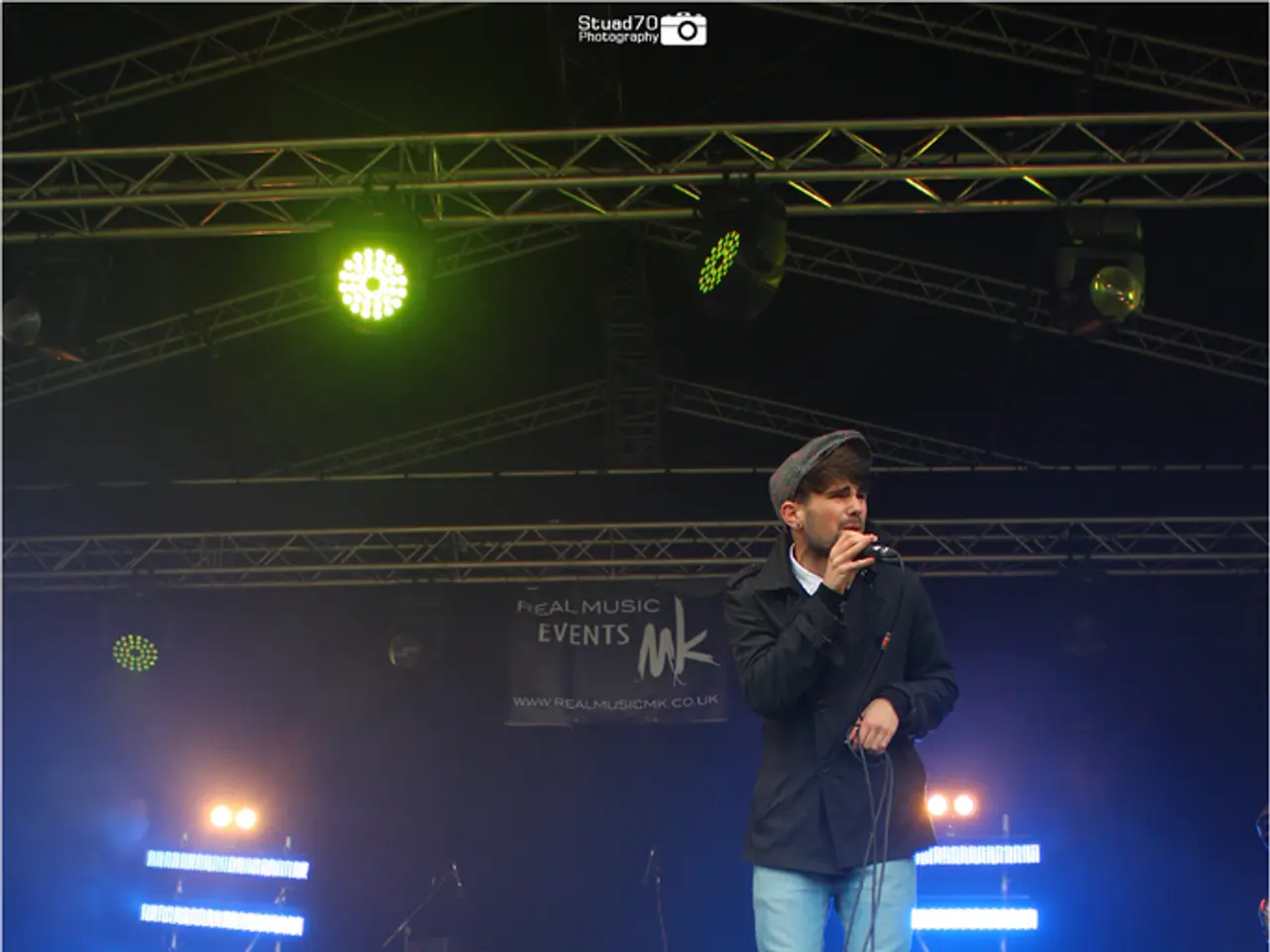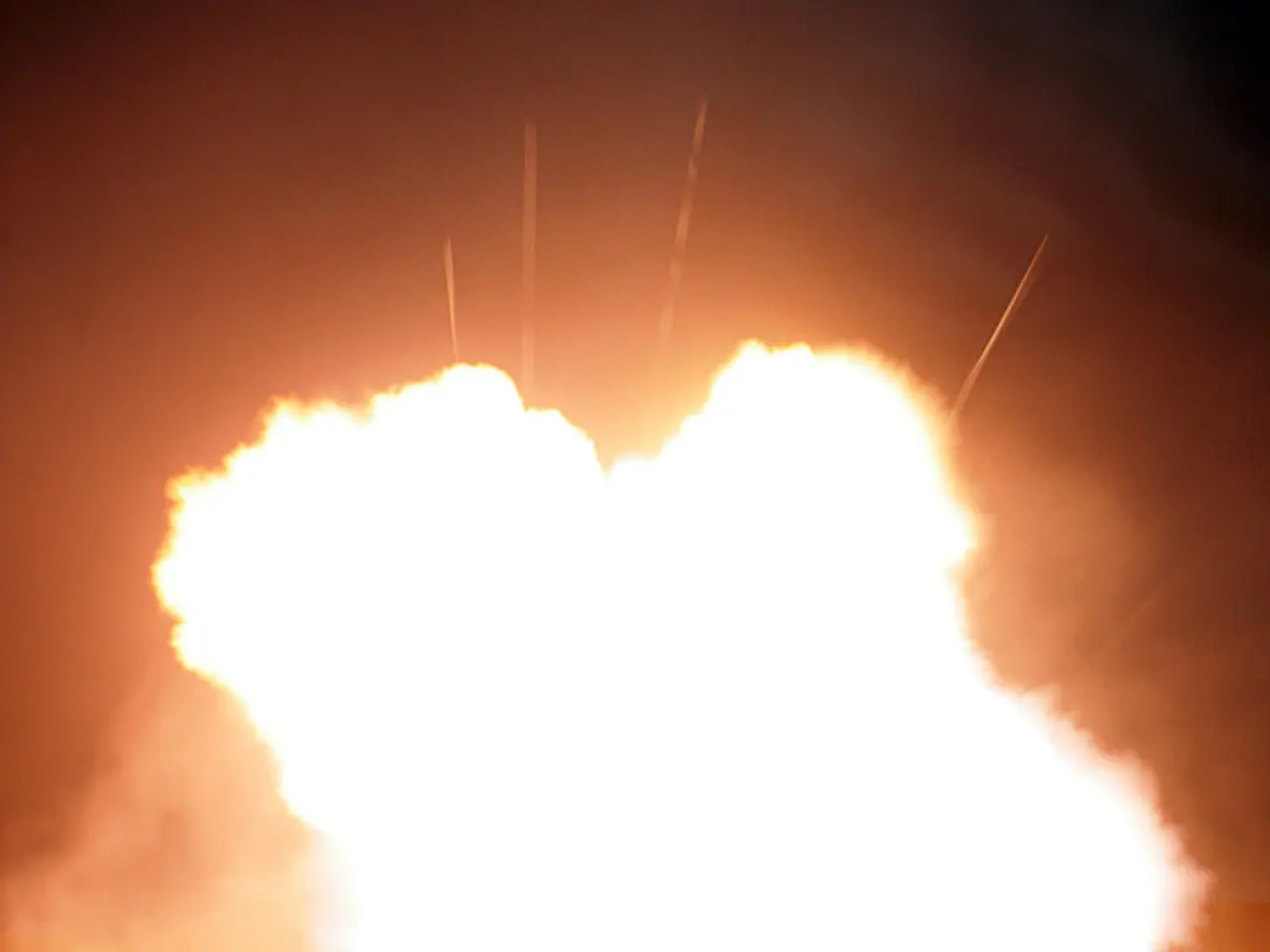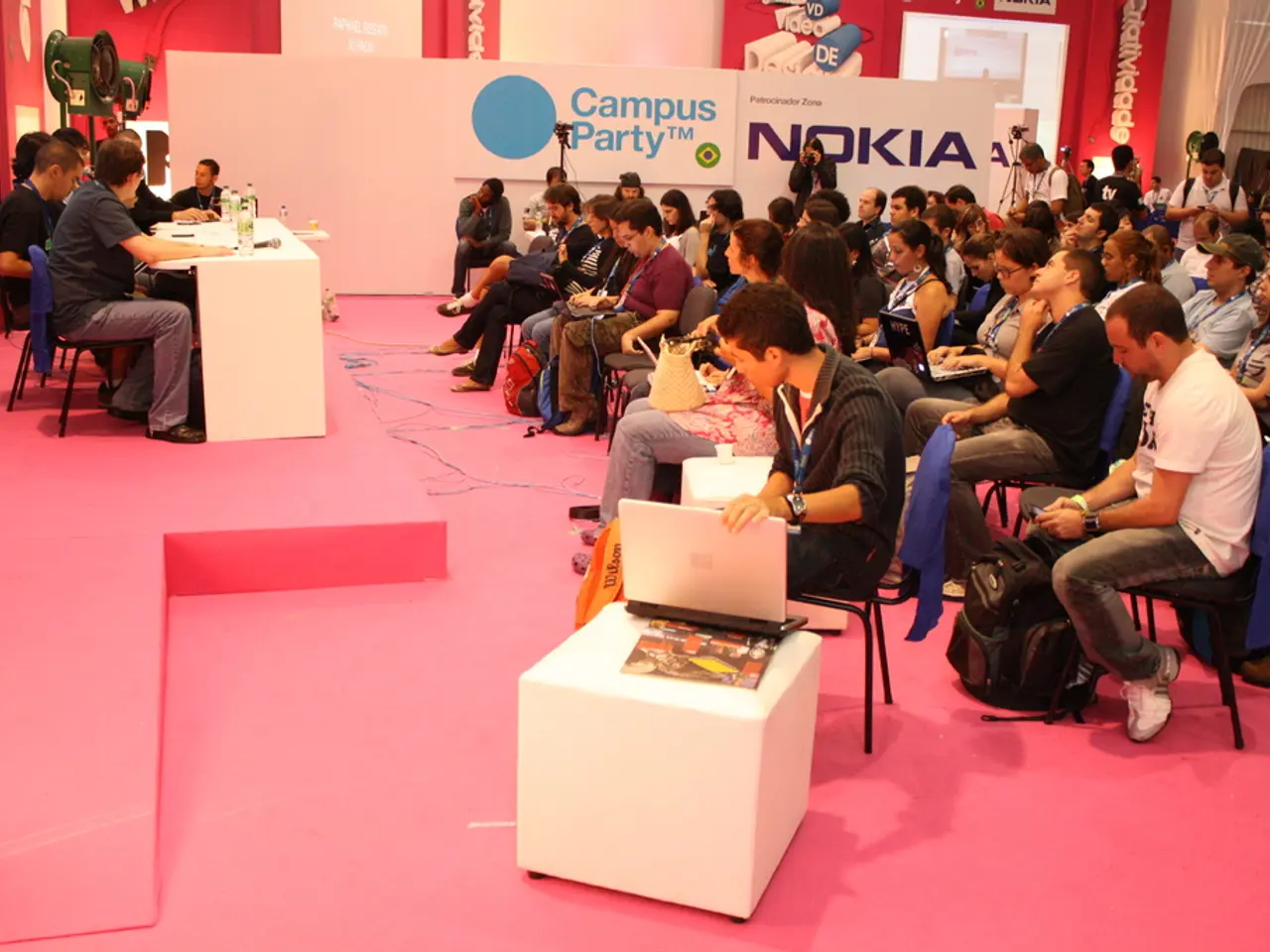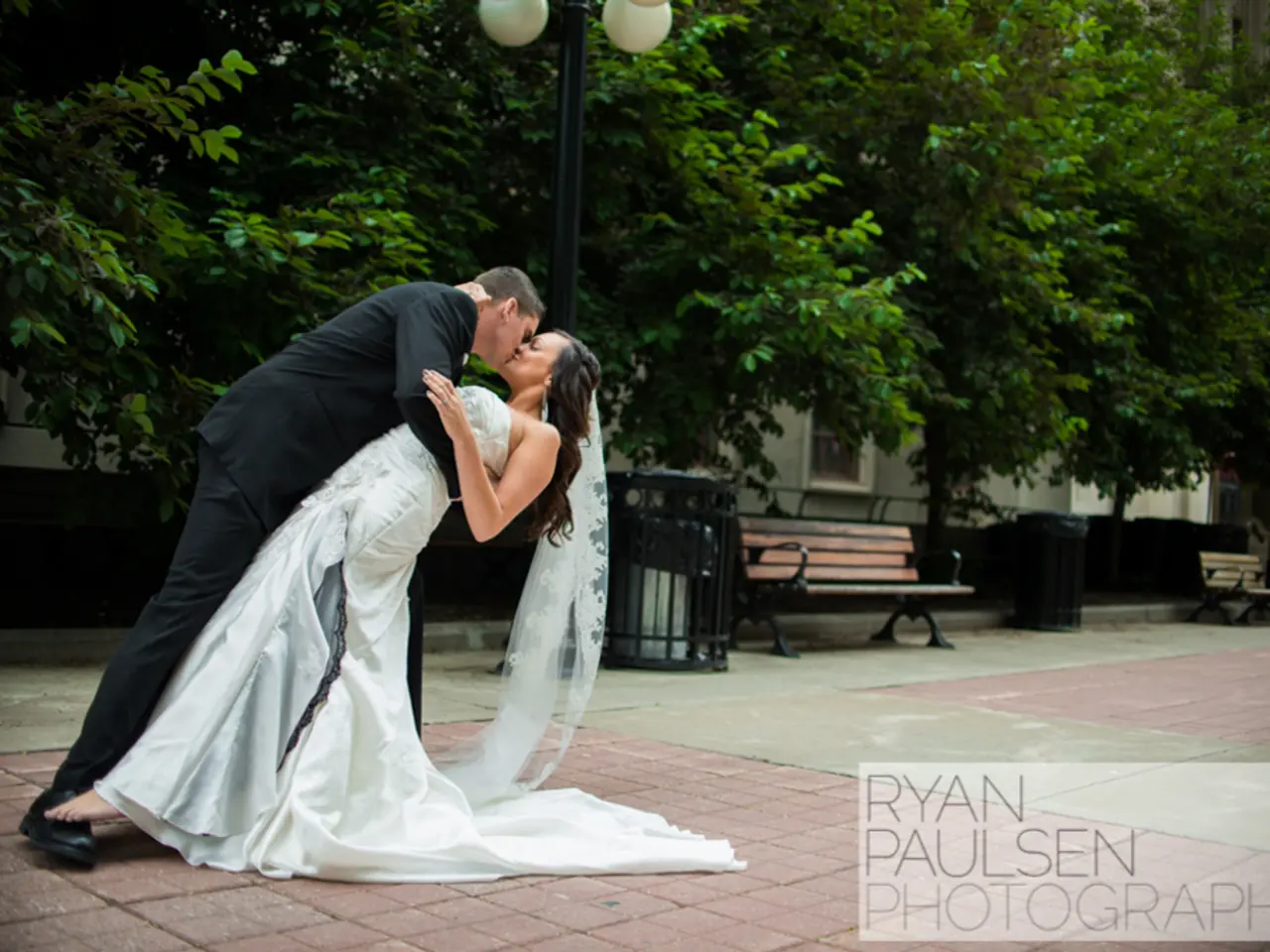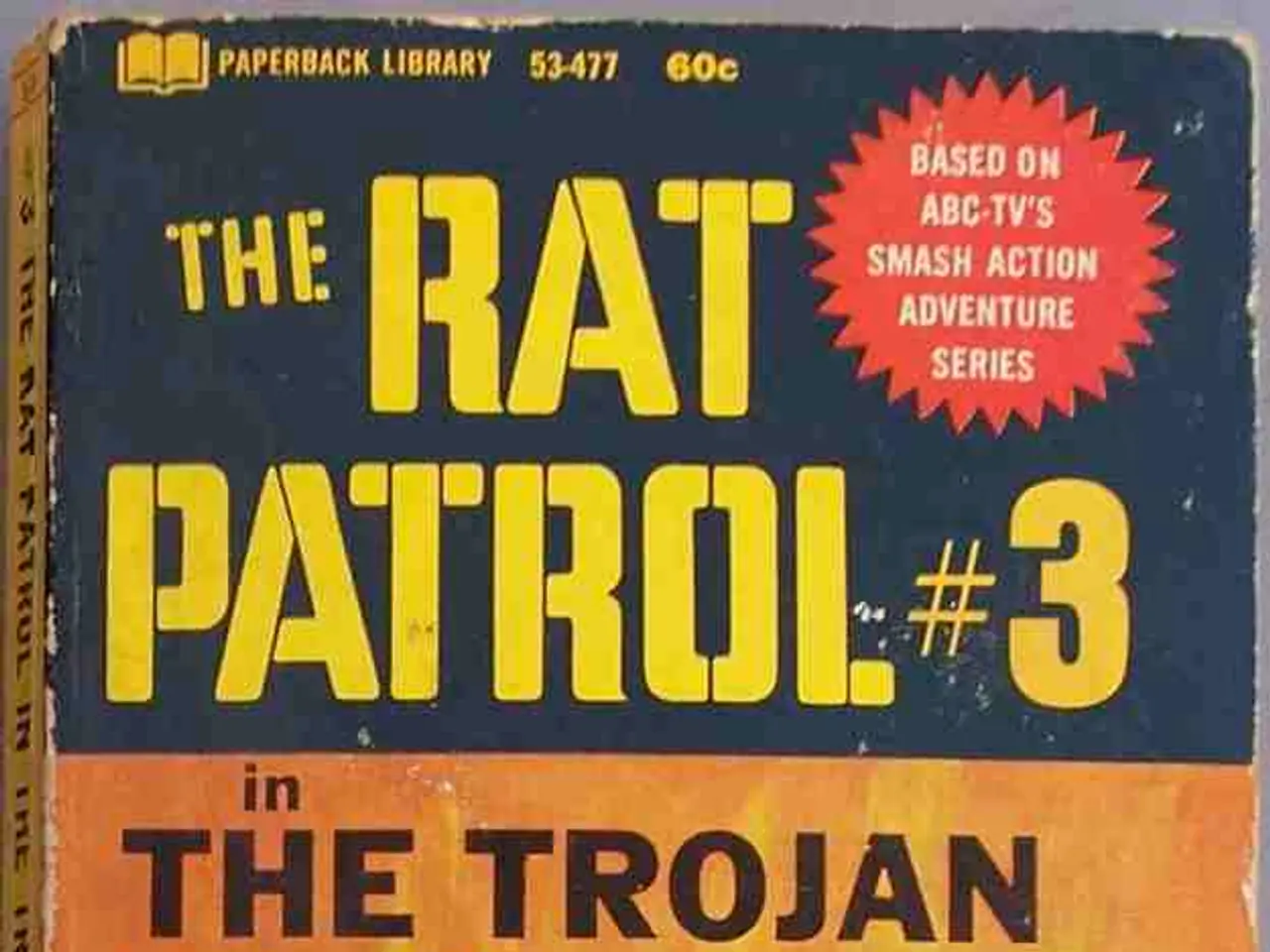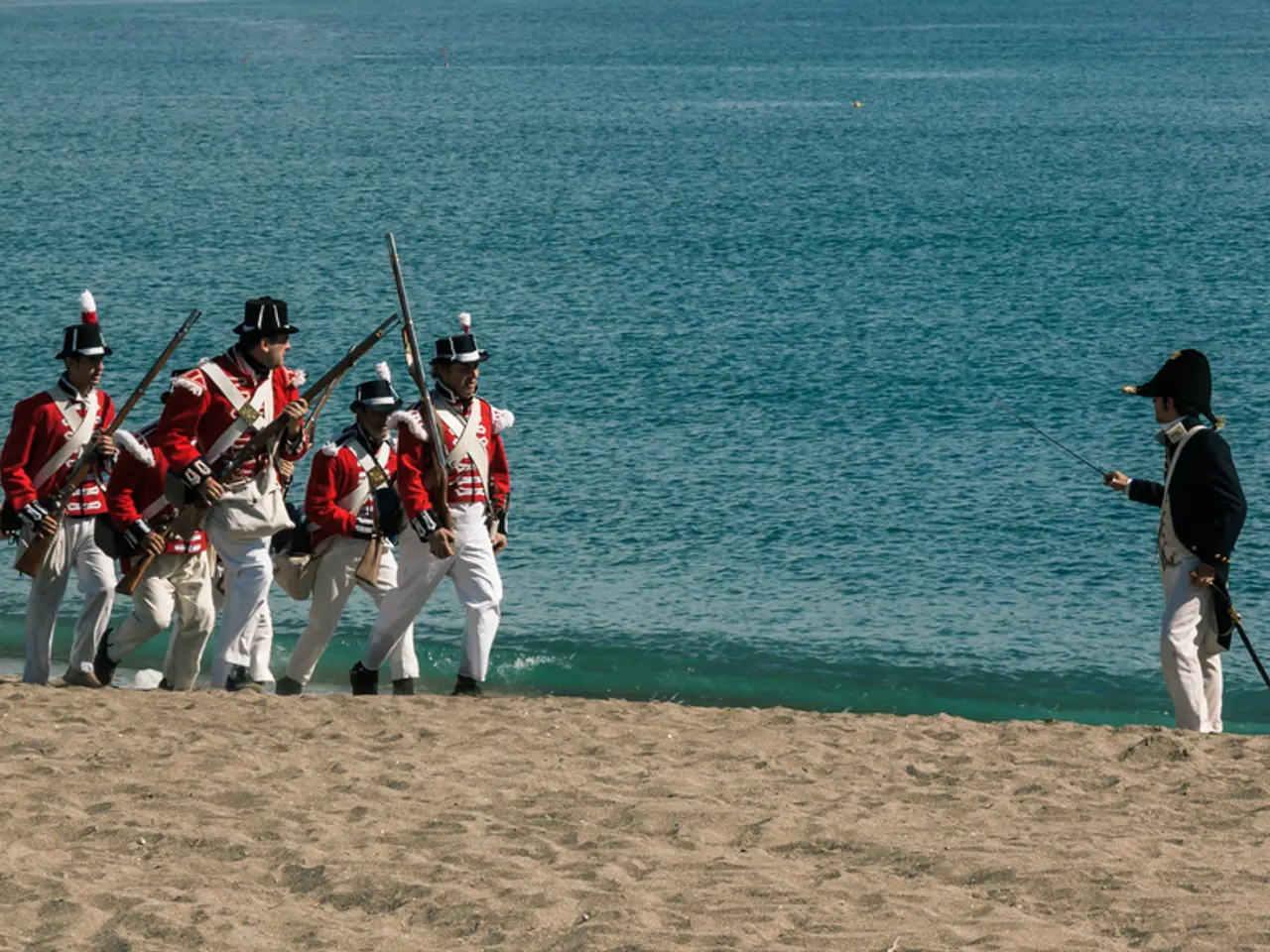Right-wing and Frontline: Analysis of a Far-right Demonstration's Characteristics
In Berlin, Germany, an estimated 850 people gathered for a right-wing demonstration on Saturday, significantly lower than the organizers' anticipated 10,000 participants. The event, dubbed "Frieden, Freiheit, Volksabstimmung" (Peace, Freedom, People's Vote), was orchestrated by the network "Deutschland steht auf", affiliated with the Querdenken movement.
The rally was marked by the presence of various right-wing groups, including members of the AfD and extremist factions such as Jung-Nazis from "Deutsche Jugend voran", recently classified as right-extremist by the Berlin Verfassungsschutz. Additionally, attendees included supporters of the Querdenker movement, "Die Basis", Wertetunion, and other extremist elements.
Participants carried flags symbolizing Germany, Russia, the peace movement, and right-wing extremist groups. The demonstration focused on themes including opposition to the "Corona-Diktatur" (Covid dictatorship), alleged "Impfverbrechen" (vaccine crimes), and broader right-wing talking points.
Notable speakers at the protest included the right-wing publisher Jürgen Elsässer, as well as AfD politicians like Christina Baum and Dennis Hohloch. Elsässer and other speakers praised the need to "chase them up above" and expressed support for "Politikerhaft" (politician punishment). They also criticized mainstream media and "Gendermainstreaming."
Prominent AfD donor and right-wing activist Winfried Stöcker served as the event's "Schirmherr" (patron). Stöcker, an Arzt and Pharmaunternehmer, previously donated 1.5 million euros to the AfD during the Bundestagswahl, breaking the party's record for largest donation in its history. He also supported the protest with a "verhältnismäßig große Spende" (relatively large donation), according to the Tagesspiegel.
Stöcker's ties to the far-right have been noted in the past, as he has made racist comments, such as spreading the "Großen Austausch" conspiracy theory in 2017.
Approximately 200 counter-protesters rallied during the afternoon under the banner "Den Nazis keinen Meter" (Not an Inch for the Nazis) nearby, called for by groups like Geradedenken, Queermany, and Solid. The counter-protesters encouraged support for "ein gutes Leben für Alle" (a good life for all). As the right-wing demonstration began to disperse in the late afternoon, around 50 anti-fascists constructed a blockade, which was eventually broken up by police and dispersed the participants.
The protest serves as a reminder of the continued presence of right-wing extremism and conspiracy theories in Germany's political landscape.
- The demonstration in Berlin, Germany, showcased a fusion of politics, combining right-wing groups like the AfD and extremist factions with general-news topics like the "Corona-Diktatur" and "Impfverbrechen".
- The rally in Germany, attended by various extremist elements such as "Deutsche Jugend voran" and "Die Basis", highlighted the intersection of crime-and-justice issues with politics, as speakers such as Jürgen Elsässer advocated for "Politikerhaft" and expressed support for confrontational rhetoric.

